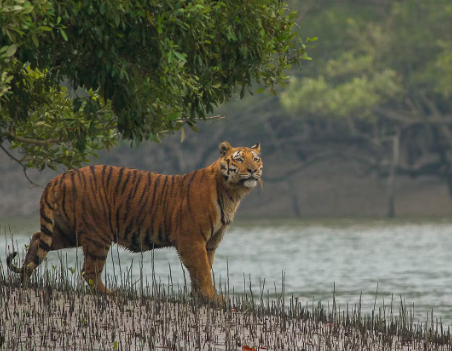The Royal Bengal Tiger in the Sundarbans: A Majestic Marvel
The Royal Bengal Tiger, a symbol of strength and beauty, is an essential part of the Sundarbans ecosystem. This unique mangrove forest, straddling the border of India and Bangladesh, is the only place in the world where these magnificent tigers roam in the wild. Understanding their habitat and behavior not only helps in conservation efforts but also sheds light on the intricate balance of nature.
The Ecosystem of the Sundarbans
The Sundarbans is a UNESCO World Heritage Site, renowned for its vast mangrove forests and diverse wildlife. Home to over 400 species of animals, it provides a crucial habitat for the Royal Bengal Tiger. This unique ecosystem features a complex network of tidal waterways and mudflats that support both terrestrial and aquatic life. The brackish waters allow tigers to hunt not just land animals but also fish and crabs, showcasing their adaptability and hunting skills.
The Importance of Conservation
The Royal Bengal Tiger is categorized as endangered due to habitat loss, poaching, and human-wildlife conflict. Conservation efforts are vital to ensure the survival of this iconic species. Organizations and governments are working tirelessly to protect the Sundarbans and its inhabitants, implementing initiatives such as anti-poaching patrols and habitat restoration. By raising awareness and promoting eco-tourism, we can engage more people in the vital cause of preserving this majestic tiger’s habitat.
Understanding Tiger Behavior
The behavior of the Royal Bengal Tiger is fascinating and complex. These solitary animals are known for their stealth and agility, primarily hunting at dawn or dusk. They are great swimmers, which is a crucial adaptation to the flooded landscapes of the Sundarbans. Understanding their habits, including communication through scent marking and vocalizations, is essential for effective conservation strategies. Further research into their patterns can help scientists and conservationists develop better methods to protect them and their habitats.
In conclusion, the Royal Bengal Tiger is not just a creature of beauty; it is a vital part of the Sundarbans ecosystem that requires our attention and protection. By learning more about these incredible animals and the challenges they face, we can all play a role in their conservation. Let’s commit to protecting this remarkable species and the unique habitat it calls home.

